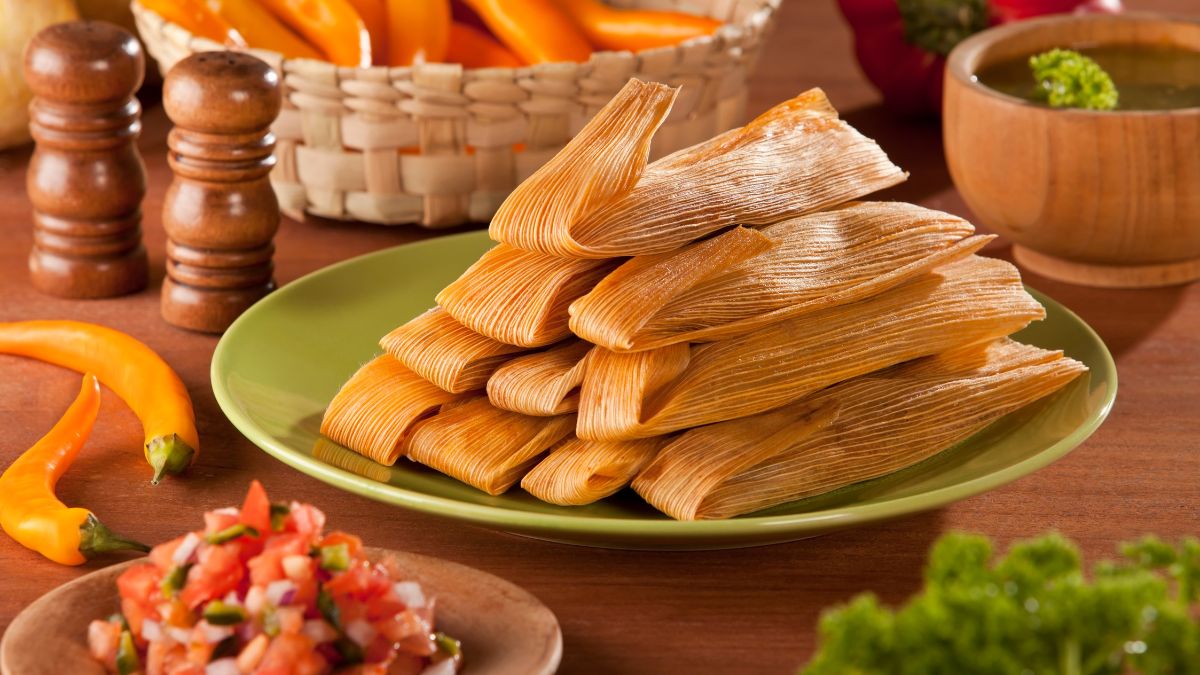This March 23rd marks the celebration of National Tamale Day 2024, a day dedicated to one of the most traditional and beloved dishes across various cultures, particularly within the Mexican community. However, what sets this day apart is its origin and the reason behind its specific date.
National Tamale Day was founded in 2015 by Richard Lambert, the owner of the Santa Barbara-based establishment, Tamales-To-Go. Lambert’s initiative was fueled by his family’s love for tamales and his desire to highlight his signature dish. Choosing March 23rd as the date for this celebration was strategic; it aimed to encourage the enjoyment of tamales throughout the year. Interestingly, the date was selected due to the lack of competing food celebrations, with Melba Toast being the only notable exception on the calendar.
Tamale eating day in Mexico
In contrast, Mexico celebrates its own version of National Tamale Day on February 2nd, aligning with the Day of the Candlemas. This tradition of eating tamales on February 2nd has its roots deeply embedded in pre-Hispanic times. Within the Aztec calendar, February 2nd signaled the start of the sowing season, and tamales were traditionally offered to the gods to ensure a bountiful harvest.
With the arrival of the Spaniards, this pre-Hispanic tradition merged with the Christian feast of Candlemas, commemorating the presentation of Jesus at the temple. According to this tradition, the godparents of the Child Jesus are responsible for bringing tamales and atole to the church as offerings.
Therefore, the tradition of eating tamales on February 2nd holds a profound religious and cultural significance, symbolizing fertility, renewal, and abundance. Meanwhile, National Tamale Day on March 23rd serves as a modern homage to this rich culinary heritage, inviting people from all walks of life to partake in the enjoyment of tamales, transcending its traditional seasonal confines and celebrating the dish’s enduring appeal in family gatherings and festive occasions.
What does the word tamale mean?
The word “tamal” comes from the Nahuatl “tamalli” which means wrapped.
Tamales were an important food in the diet of Mesoamerican cultures. They were consumed in religious ceremonies, feasts, and daily meals. They were also used as offerings to the gods.
After the Spanish conquest, tamales adapted to the new ingredients and flavors that arrived from Europe. New fillings were introduced, such as pork, cheese, and chocolate. New cooking techniques, like baking, also began to be used.
Tamales were part of the altars and festivities dedicated to gods such as Coatlicue; in celebrations dedicated to Tezcatlipoca and the deceased; in honor of Xilonen, the goddess of tender corn; Huitzilopochtli, the god of war; Mixcóatl, the god of storms; to the god of fire Xiuhtecuhtli and, finally, on February 2nd to the water gods called Tlaloques, from whom rains and good harvests were requested.
ALSO READ. Elena Larrea, the Mexican cowgirl who died at 30 and built a horse sanctuary with her OnlyFans earnings
Types of Tamales
There are different types of tamales in the regions of Mexico. Here are some examples:
- Huasteca Hidalguense: The tapataxtle is prepared, which is a tamal 50 or 70 centimeters long that is made to cure the evil arts of witchcraft, hence its name means in Nahuatl language “to cover or conceal the evil.”
- In San Luis Potosí and some other states, the zacahuil is cooked, which is a large tamal wrapped in banana leaves containing a whole piglet or bird. The word comes from the Nahuatl zacatl meaning “to wrap”, and huilotl, which means “dove.”
- In Huasteca Potosina, the patlashe or bolim is also prepared, filled with chicken or guacamole and consumed in special festivities.
- In the Yucatán Peninsula, the mucbipollo or chicken, turkey, or pork tamal is cooked, typical of the Day of the Dead.
- In Veracruz, the cazuela tamal and the soft ball tamal or strained tamal are prepared for weddings.
- In Querétaro, the tamal de muerto is cooked with blue corn dough, filled with cheese and ancho chili, which, in the past, was prescribed by the town’s healer to the sick to relieve them of some illness.
- In Ocoyoacac, State of Mexico, the so-called tamal de ollita is prepared; and in Oaxaca, there is a great variety of tamales, some of the most well-known in this case are those wrapped in banana leaf.
To this list are also added the traditional corn husk tamales of red mole, green sauce, rajas with cheese, and sweet, which can be found in thousands of stands in CDMX and other cities, which are among the best-selling.
Additionally, there are corn tamales, bean tamales, and even more modern varieties such as vegan tamales.












